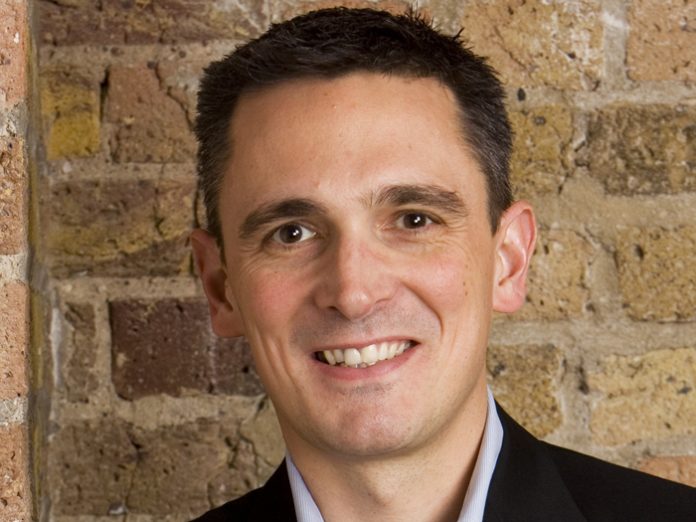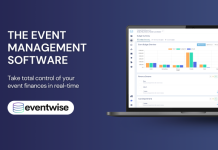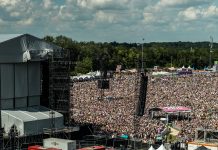Marino Fresch is Eventbrite‘s Marketing Director for the UK and Ireland. He is an experienced online marketer and e-commerce professional with over 15 years’ experience defining marketing and web strategies, and executing strong online marketing that has a proven, measurable impact to customers. Before he joined Eventbrite, he worked with leading brands including, eBay, Expedia, Eurostar, Ryanair, John Lewis and BMW. Marino holds an MBA from Cornell University.
The original spirit of the music festival is to live for the moment and to enjoy a hedonistic weekend. Some festivals interpret this as a weekend away from your smartphone, but the majority of events add new technologies to the festival experience. The question is how this technology will impact what it means to go to a festival in the future.
Technology’s big moments are headline-grabbers, like Tupac’s hologram performance at Coachella. It’s hard to resist bringing the unthinkable to life. Want to see The Beatles playing on the Apple roof? Or Queen at Live Aid? We’re not far away from such events coming to a festival near you. Holograms are fascinating and immersive for sure. Is it something that will stay with us and become an integral part of the festival experience, though?
It’s much more likely that tech will work with the elements of festivals as we know them today, rather than change them altogether.
Many events ask attendees to wear wristbands, which contain an RFID chip for various uses, starting with quick access for fans and a method for the festival itself to reduce fake tickets. But it’s also something that brings other benefits, notably speeding up – and increasing – on-site transactions by allowing for a cashless event. Our own all-in-one RFID solution offers services such as: flexible access control, allowing organisers to quickly manage entry and exit to multiple areas over different days; cashless payment systems; and real time order tracking – allowing attendees to manage their own orders.
These wristbands also allow intelligent location services, such as real-time heat maps to judge how people actually behave on the day. Anyone who has attended a festival will know it’s easy to forget your original plan! This allows organisers to understand how popular an artist is at the event itself, as opposed to less specific measurements such as Spotify streams. It can also help with act scheduling, e.g. making sure that two artists who share an audience don’t clash.
Heat maps can also be used to spot problems with the site’s layout – perhaps there’s an entry / exit hotspot causing issues at a stage, or maybe a bar or merch stand is located in a spot which means that it’s underused.
Tomorrowland’s wristbands offer another angle for development. Met a new friend who you’d like to stay in touch with? Simply touch wristbands with your new pal to stay in touch via Facebook. It’s an idea which opens a range of possibilities to unite social media with first-hand friendships. Sponsors will also benefit by being able to connect with fans in a more meaningful way.
They can also contribute to the energy of an event, as shown by Coldplay’s use of Xylobands, which make the audience part of the lightshow. These wristbands are equipped with LED lights which can be triggered to light up at specific moments in songs or even in time with the music. The resulting Instagrammable image provides an immediate boost in their social media presence.
As music is central to a festival, Doppler Labs’ Here One earbuds are set to become more important. Their partnership with Coachella has provided a glimpse into the future. Using an accompanying app, fans can use the earbuds to adjust their own sound mix. Too much bass? Turn it down. The vocals sound buried? Turn them up. Is the PA quiet or too loud? A quick tweak will fix the problem. Even a sound bleed from another stage can be blocked.
Its range of sound effects feels like a toy, but hey, it’s a festival. You’ll surely catch an artist you’re not that bothered about seeing, so a fun distraction is always welcome. If they become the next must-have, it’s also likely that they’ll be able to help people hear each other speak above the noise.
Technology can also change the emotion of the moment. Sensum are one of the companies leading the field in uniting the art and the science behind our emotions. It’s becoming possible to assess the mood of an audience in real time by using a mixture of methods such as biometrics, social media, emojis and location data. As the technology evolves, the potential usage of this is near endless. It could identify what images in a visual display would be able to lift the crowd’s mood, or even help the artist decide what the next song in their set should be.
All these factors show that technology will improve the next wave of music festivals. Your wristband makes your experience both more practical and more social. Your haptic clothing allows the rhythm to pulse along your limbs. Your earbuds provide audio that matches your needs. Your emotions are being fed back into the show, which in turn can alter the atmosphere. And organisers have the ability to change each factor to improve the event based on raw data rather than pure instinct.
Welcome to the music festival of the future.






